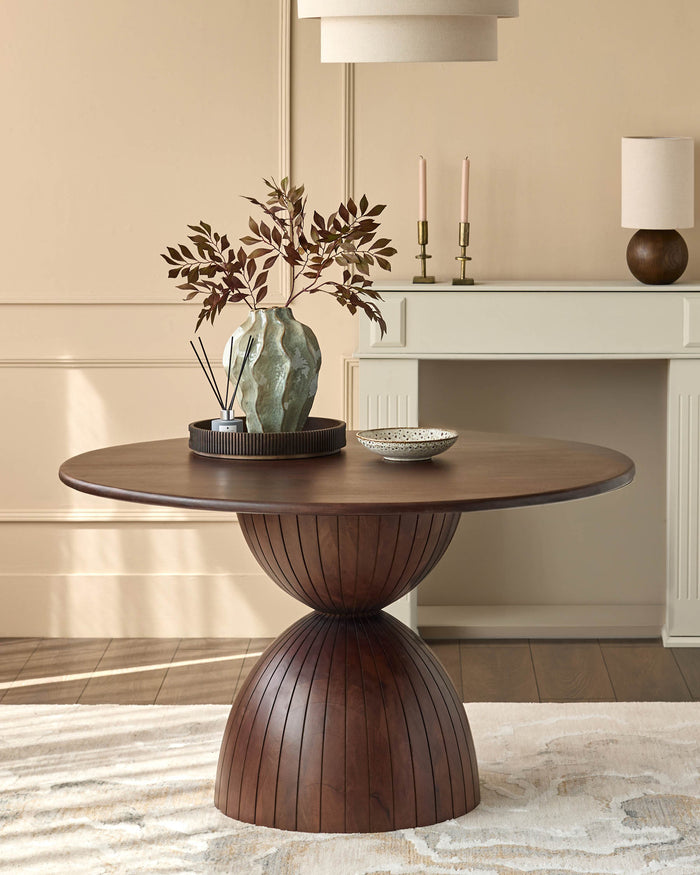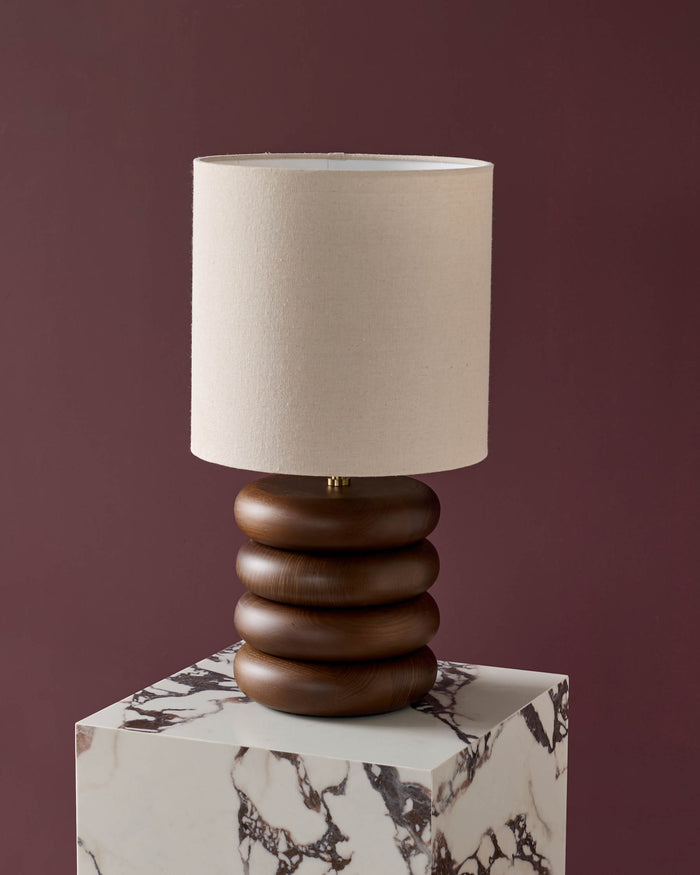Over recent years there has been a significant shift in design trends as people seek to reconnect with nature and create a more restful sanctuary of their homes to provide respite from an ever-developing world. Modern day advancement of technology and the way in which we work and travel has become extremely over stimulating, on top of which, many people find themselves spending the vast majority of their time indoors, disconnected from nature. This disconnection has contributed to a range of health and well-being concerns, including things like stress and anxiety.
The biophilia interior trend has become more popular in the home, driven by our innate desire to bond with nature and our growing awareness of the positive impacts nature has on our well-being. Biophilic interior design focuses on integrating natural elements into the home, and one of the keyways to achieve this is by using natural materials in interiors. But what is Biophilia exactly, and how can you apply it to your home?
What Is Biophilia and Why Does It Matter?
Biophilia is the theory that as a species we have a biological need to connect with nature. Our ancestors spent the majority of their time outdoors, surrounded by plants, animals, water and the natural world. In modern times however, we’ve become increasingly removed from nature, with many of us spending up to 90% of our time indoors. This disconnection has been linked to poor mental wellbeing and even a decrease in productivity.
Biophilic design aims to close that gap by bringing natural elements indoors, creating spaces that promote relaxation, creativity, and well-being. Natural materials, along with plants, natural light, and organic shapes, play an essential role in creating this environment.

Benefits of Using Natural Materials
Incorporating natural materials not only plays on the biophilia interior trend but can bring several other benefits to your home.
- Health & wellbeing: Synthetic materials often contain chemicals that can negatively impact indoor air quality. Natural materials, on the other hand, are free from harmful toxins and help create a healthier living space.
- Durability and Timeless Appeal: Materials like wood and stone age well as they develop character over time, making them more beautiful as they age. They can also last for generations which adds a timeless quality to your interiors and provides a more sustainable option.
- Calming Aesthetic: Natural materials provide a sense of calm and serenity. Textures and colours found in nature have a soothing effect on the human mind, helping to reduce stress and anxiety.
- Increased Productivity and Creativity: Research has demonstrated that exposure to nature can boost cognitive function, creativity, and productivity. By incorporating natural elements into home offices or study areas, biophilic design in the home can help create a more inspiring and efficient work environment, which is especially relevant in the era of remote work.
- Connection to Nature: Biophilic interiors foster a deeper connection to the natural world, which can have a profound psychological impact. This connection helps reduce feelings of isolation and enhances our sense of place and belonging. Even in urban settings, where access to nature may be limited, biophilic design can provide a refuge and offer the restorative benefits of nature.
- Sustainability: Natural materials like wood, stone, and organic fabrics are both renewable and biodegradable, making them a more sustainable option than the synthetic alternatives. They are also more energy efficient to produce.
Types of Natural Materials to Use and how?
Using materials that evoke the natural textures and patterns of nature is essential in biophilic design. Materials such as wood, stone, clay, and fabrics like wool and linen can bring warmth, texture, and interest to a space. The use of organic materials not only appeals to our senses but also promotes sustainability.
1. Wood
Wood is probably the most versatile natural material. Its warmth, texture, and organic feel can instantly elevate any space. From the modern farmhouse barn aesthetic to more modern interiors, wood can be used in flooring, architectural elements, furniture, and decor. There are many types of wood that can be used and each has its own unique look and benefits. Woods like oak or ash are great for indoor furniture pieces while weatherproof hardwoods like teak or acacia are great for outdoor furniture.

How to incorporate wood:
- Features such as wooden beams in ceilings, columns or cladding add character and depth to a room.
- Wooden furniture, such as coffee tables, shelving, or dining furniture adds warmth to a space and brings a timeless aesthetic with furniture that's built to last.
- Incorporate decor items like wooden picture frames, bowls or storage helps to add layers to a space and create interest and warmth.
2. Stone
Materials like marble, quartz or ceramic make great additions to our homes due to their strength and durability but also for the innately organic natural patterns which help to elevate our interiors by bringing texture and depth to the space.
How to incorporate stone:
- Installing a stone accent wall, feature tiling or a stone fireplace creates a focal point in your home.
- Marble or granite countertops in your kitchen and bathroom bring a sophisticated yet natural touch.
- Marble topped tables in organic forms can help bring texture and interest to a space and help to tie in other natural elements within the space. Not only that but materials like marble or ceramic on furniture are extremely durable and will last for years to come.
3. Natural Fabrics
Textiles like linen, cotton, jute, wool, and hemp offer a tactile connection to nature. These materials are breathable, comfortable, and eco-friendly, making them ideal for upholstery, curtains, rugs, and bedding.
How to incorporate natural fabrics:
- Choose linen or cotton curtains to let natural light filter into your home.
- Use wool throws and cushions to add texture and warmth to your seating areas.
- Opt for a jute or sisal rug to bring in a neutral, earthy texture that works well in various settings.
4. Plants and Greenery
No biophilic interior would be complete without the addition of live plants. Greenery not only improves air quality but also brings the energy of the outdoors inside. Plus, plants are versatile and can be used in any room.
How to incorporate plants:
- Create a vertical garden or a living wall in your living room or kitchen.
- Place potted plants in corners, on windowsills, or as a centrepiece on your dining table.
- Opt for hanging plants to maximize space and add greenery to smaller rooms.
How to Apply Biophilia in Your Home Design
Beyond simply adding natural materials and plants, biophilic design incorporates more holistic principles to create a deep sense of connection with nature. Here are some design strategies to consider:
1. Maximize Natural Light
Allowing natural light to flood your space is one of the most powerful ways to boost your connection to the outdoors. Large windows, skylights, and open layouts help create a light, airy atmosphere that mirrors the outside world. Well placed mirrors help to bounce the light back around the room and make the room feel lighter and airy, our organically shaped Caspian mirror range would be a great addition to any space to help achieve this.
2. Use Natural Shapes

Biophilic design often favours organic shapes and forms found in nature, such as flowing lines, irregular patterns, and rounded edges. You can introduce this concept through architectural details like curved walls or arched doorways or with furniture design such as our Cara wood and marble coffee and side table range.
3. Create Outdoor-Inspired Spaces
Blend indoor and outdoor spaces by creating a seamless transition between the two. Consider adding a patio with natural stone or wood decking, and use outdoor furniture made from natural materials to extend your living area into nature.
Conclusion
Incorporating natural materials into your home and applying biophilia in interior design is about more than just aesthetics. It’s a way to create spaces that promote well-being, reduce stress, and nurture that ever sought after deeper connection with the natural world. By thoughtfully integrating materials like wood, stone and natural fabrics into your interiors, you can transform your home into a sanctuary of calm and tranquillity—one that feels grounded, organic, and inviting.






















